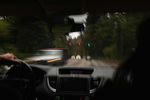-
Path: news-archive.icm.edu.pl!news.icm.edu.pl!newsfeed.pionier.net.pl!goblin2!goblin.
stu.neva.ru!aioe.org!.POSTED.G0cDw8v+1iW5iXf8RUZong.user.gioia.aioe.org!not-for
-mail
From: trybun <M...@j...cb>
Newsgroups: pl.comp.pecet
Subject: Re: Bootloader
Date: Thu, 8 Oct 2020 11:58:25 +0200
Organization: Aioe.org NNTP Server
Lines: 242
Message-ID: <rlmnru$14am$2@gioia.aioe.org>
References: <rl6v9t$boa$1@dont-email.me> <rl9cbh$13pv$1@gioia.aioe.org>
<rl9db2$fra$2@dont-email.me> <rl9fnn$hr9$1@gioia.aioe.org>
<rl9gnv$3e1$1@dont-email.me> <rl9ksi$o4i$1@gioia.aioe.org>
<5f7ba2e3$0$542$65785112@news.neostrada.pl> <rlhmnc$1b0$1@gioia.aioe.org>
<5f7cf767$0$17351$65785112@news.neostrada.pl>
<5f7cfa58$0$31100$65785112@news.neostrada.pl>
NNTP-Posting-Host: G0cDw8v+1iW5iXf8RUZong.user.gioia.aioe.org
Mime-Version: 1.0
Content-Type: text/plain; charset=iso-8859-2; format=flowed
Content-Transfer-Encoding: 8bit
X-Complaints-To: a...@a...org
User-Agent: Mozilla/5.0 (Windows NT 10.0; Win64; x64; rv:78.0) Gecko/20100101
Thunderbird/78.3.1
X-Notice: Filtered by postfilter v. 0.9.2
Content-Language: pl
Xref: news-archive.icm.edu.pl pl.comp.pecet:1269147
[ ukryj nagłówki ]W dniu 07.10.2020 o 01:13, Eneuel Leszek Ciszewski pisze:
>
> "Eneuel Leszek Ciszewski" 5f7cf767$0$17351$6...@n...neostrada.pl
>
>
>> Możesz użyć (tekstowego) BCDEdit -- ale (graficzny) EasyBCD jest
>> prostszy...
>
> Możesz uruchomić PowerShell (prawy myszy na znak Win) i spod niej
> uruchomić
> tekstowy BCDEdit, by zobaczyć to i owo z BCD. Wygląda to tak sobie pod
> względem
> czytelności, gdy chcemy tu coś modyfikować:
>
>
>
>
>
> Windows PowerShell
> Copyright (C) Microsoft Corporation. All rights reserved.
>
> Try the new cross-platform PowerShell https://aka.ms/pscore6
>
> PS C:\Windows\system32> bcdedit
>
> Windows Boot Manager
> --------------------
> identifier {bootmgr}
> device partition=\Device\HarddiskVolume9
> description Windows Boot Manager
> locale pl-PL
> inherit {globalsettings}
> default {default}
> resumeobject {76ad73b0-04e6-11eb-9467-806e6f6e6963}
> displayorder {09e32fc4-068b-11eb-9428-54ab3ae19492}
> {b206a301-2f2e-11e9-93ea-54ab3ae19492}
> {current}
> {cb00ead4-0433-11eb-9465-54ab3ae19492}
> {default}
> toolsdisplayorder {memdiag}
> timeout 10
>
> Windows Boot Loader
> -------------------
> identifier {09e32fc4-068b-11eb-9428-54ab3ae19492}
> device partition=\Device\HarddiskVolume10
> path \Windows\system32\winload.exe
> description Evo_0 201004
> locale pl-PL
> osdevice partition=\Device\HarddiskVolume10
> systemroot \Windows
> resumeobject {ed84712b-068c-11eb-946b-806e6f6e6963}
>
> Windows Boot Loader
> -------------------
> identifier {b206a301-2f2e-11e9-93ea-54ab3ae19492}
> device partition=\Device\HarddiskVolume11
> path \Windows\system32\winload.exe
> description Start z S Evo1
> locale en-US
> osdevice partition=\Device\HarddiskVolume11
> systemroot \Windows
> resumeobject {ff048c9e-2f2e-11e9-93ee-806e6f6e6963}
> bootmenupolicy Standard
>
> Windows Boot Loader
> -------------------
> identifier {current}
> device partition=C:
> path \Windows\system32\winload.exe
> description 0_SSHD_CiemnoMietowy
> locale pl-PL
> osdevice partition=C:
> systemroot \Windows
> resumeobject {76ad73b0-04e6-11eb-9467-806e6f6e6963}
> bootmenupolicy Standard
>
> Windows Boot Loader
> -------------------
> identifier {cb00ead4-0433-11eb-9465-54ab3ae19492}
> device unknown
> path \Windows\system32\winload.exe
> description 0_HDD_Black
> locale pl-PL
> osdevice unknown
> systemroot \Windows
> resumeobject {03426811-0686-11eb-9428-806e6f6e6963}
> bootmenupolicy Standard
>
> Real-mode Boot Sector
> ---------------------
> identifier {default}
> device boot
> path \NST\AutoNeoGrub0.mbr
> description EasyBCD BIOS Extender
> locale pl-PL
> custom:250000c2 1
>
>
>
>
>
>
>
>
> To tylko kilka wpisów. Teraz pomyśl co będzie, gdy na każdym dysku
> (z trzech: SSD, SSHD i HDD) mam po kilka (3 lub 4) partycji podstawowych
> a na każdej z nich mam BCD z wpisami i W10, i różnych obrazków...
>
> BCDEdit jest mniej komfortowy niż EasyBCD, a chyba też mniej użyteczny,
> choć BCDEdit jest rodzimym produktem a EasyBCD jest programem
> zewnętrznym...
>
>
>
> W EasyBCD wszystko widać bez manuali.
>
> Podstawowa pomoc BCDEdit wygląda tak:
>
>
> PS C:\Windows\system32> BCDEdit /?
>
> BCDEDIT - Boot Configuration Data Store Editor
>
> The Bcdedit.exe command-line tool modifies the boot configuration data
> store.
> The boot configuration data store contains boot configuration
> parameters and
> controls how the operating system is booted. These parameters were
> previously
> in the Boot.ini file (in BIOS-based operating systems) or in the
> nonvolatile
> RAM entries (in Extensible Firmware Interface-based operating
> systems). You can
> use Bcdedit.exe to add, delete, edit, and append entries in the boot
> configuration data store.
>
> For detailed command and option information, type bcdedit.exe /?
> <command>. For
> example, to display detailed information about the /createstore
> command, type:
>
> bcdedit.exe /? /createstore
>
> For an alphabetical list of topics in this help file, run "bcdedit /?
> TOPICS".
>
> Commands that operate on a store
> ================================
> /store Used to specify a BCD store other than the current
> system default.
> /createstore Creates a new and empty boot configuration data store.
> /export Exports the contents of the system store to a file.
> This file
> can be used later to restore the state of the system
> store.
> /import Restores the state of the system store using a backup
> file
> created with the /export command.
> /sysstore Sets the system store device (only affects EFI
> systems, does
> not persist across reboots, and is only used in cases
> where
> the system store device is ambiguous).
>
> Commands that operate on entries in a store
> ===========================================
> /copy Makes copies of entries in the store.
> /create Creates new entries in the store.
> /delete Deletes entries from the store.
> /mirror Creates mirror of entries in the store.
>
> Run bcdedit /? ID for information about identifiers used by these
> commands.
>
> Commands that operate on entry options
> ======================================
> /deletevalue Deletes entry options from the store.
> /set Sets entry option values in the store.
>
> Run bcdedit /? TYPES for a list of datatypes used by these commands.
> Run bcdedit /? FORMATS for a list of valid data formats.
>
> Commands that control output
> ============================
> /enum Lists entries in the store.
> /v Command-line option that displays entry identifiers in
> full,
> rather than using names for well-known identifiers.
> Use /v by itself as a command to display entry identifiers
> in full for the ACTIVE type.
>
> Running "bcdedit" by itself is equivalent to running "bcdedit /enum
> ACTIVE".
>
> Commands that control the boot manager
> ======================================
> /bootsequence Sets the one-time boot sequence for the boot manager.
> /default Sets the default entry that the boot manager will use.
> /displayorder Sets the order in which the boot manager displays the
> multiboot menu.
> /timeout Sets the boot manager time-out value.
> /toolsdisplayorder Sets the order in which the boot manager displays
> the tools menu.
>
> Commands that control Emergency Management Services for a boot
> application
> ====================================================
======================
>
> /bootems Enables or disables Emergency Management Services
> for a boot application.
> /ems Enables or disables Emergency Management Services for an
> operating system entry.
> /emssettings Sets the global Emergency Management Services parameters.
>
> Command that control debugging
> ==============================
> /bootdebug Enables or disables boot debugging for a boot
> application.
> /dbgsettings Sets the global debugger parameters.
> /debug Enables or disables kernel debugging for an operating
> system
> entry.
> /hypervisorsettings Sets the hypervisor parameters.
>
> Command that control remote event logging
> =========================================
> /eventsettings Sets the global remote event logging parameters.
> /event Enables or disables remote event logging for an operating
> system entry.
>
> PS C:\Windows\system32>
>
>
>
>
> Jak widać -- BCDEdit zezwala na to i owo, ale EasyBCD jest łatwiejszy...
>
Tak przeglądam te opcje ale nie widzę sekcji w której można by zmienić
tryb BCD z graficznego na tekstowy..
Następne wpisy z tego wątku
- 08.10.20 11:58 trybun
- 08.10.20 12:14 heby
- 08.10.20 13:22 Adam
- 08.10.20 13:31 heby
- 08.10.20 15:55 Adam
- 09.10.20 03:11 Eneuel Leszek Ciszewski
- 14.10.20 16:03 pioruns
- 15.10.20 15:30 dantes
- 16.10.20 18:56 heby
Najnowsze wątki z tej grupy
- CFM (airflow) AMD Wraitha
- 16. Raport Totaliztyczny: Sprzedawanie zaszyfrowanych filmów na płytach Blu-Ray bez kluczy deszyfrujących
- 15. Raport Totaliztyczny: Średniowiecze Po,Zniszczeniu AmigaOS i Plan9
- USB3.x->HDMI/DP ze sterownikami w win11
- Dell ubija / przemianowuje swoje flagowe linie laptopów
- Ten adapter nie obsłuży dysków HDD PATA 2.5 cala - producent kłamie czy ja jestem głupi ?
- Przedłużacz USB-C działa w połowie
- Fujitsu LIFEBOOK E746
- Alternatywny nośnik do monitoringu zamiast HDD?
- Pendrive, ale dysk
- Dyski HDD SATA 2,5'' >2TB
- Funbox 10 - Czy miał już ktoś styczność z tym sagemowym sprzętem?
- Konwersja dysku z MBR na GPT
- Przenosiny systemu
- soft dla detekcji stanu DMA (on,czy off)
Najnowsze wątki
- 2025-01-15 Gdańsk => System Architect (Java background) <=
- 2025-01-15 Żerniki => Specjalista ds. Employer Brandingu <=
- 2025-01-15 Kraków => User Experience Designer <=
- 2025-01-15 CYA: Minister Finansów odbija piłeczkę do PKW :-) [obiektywny brak możliwości wykonania wewnętrznie sprzecznej uchwały]
- 2025-01-15 Gdańsk => Solution Architect (Java background) <=
- 2025-01-15 Zielona Góra => Senior Field Sales (system ERP) <=
- 2025-01-15 Wrocław => Application Security Engineer <=
- 2025-01-15 Warszawa => Architekt rozwiązań (doświadczenie w obszarze Java, AWS
- 2025-01-15 Kraków => Business Development Manager - Dział Sieci i Bezpieczeńst
- 2025-01-15 Białystok => Inżynier Serwisu Sprzętu Medycznego <=
- 2025-01-15 Warszawa => Programista .NET (C#/.NET) <=
- 2025-01-15 Warszawa => Developer Microsoft Dynamics 365 Finance & Operations (D36
- 2025-01-15 Warszawa => Account Manager - Usługi rekrutacyjne <=
- 2025-01-15 serce boli
- 2025-01-14 Seicento vs Szydło, comes back :)




![Linki dofollow i nofollow - jakie są różnice i czy linki nofollow mają sens? [© amathieu - fotolia.com] Linki dofollow i nofollow - jakie są różnice i czy linki nofollow mają sens?](https://s3.egospodarka.pl/grafika2/linki-sponsorowane/Linki-dofollow-i-nofollow-jakie-sa-roznice-i-czy-linki-nofollow-maja-sens-227269-150x100crop.jpg)
![Ranking kantorów internetowych. Gdzie najlepsze kursy walut? [© Pavel Bobrovskiy - Fotolia.com] Ranking kantorów internetowych. Gdzie najlepsze kursy walut?](https://s3.egospodarka.pl/grafika2/kantory-internetowe/Ranking-kantorow-internetowych-Gdzie-najlepsze-kursy-walut-218154-150x100crop.jpg)
![Jak korzystnie przelewać pieniądze do Polski pracując za granicą? [© v.poth - Fotolia.com] Jak korzystnie przelewać pieniądze do Polski pracując za granicą?](https://s3.egospodarka.pl/grafika2/przelewy/Jak-korzystnie-przelewac-pieniadze-do-Polski-pracujac-za-granica-230796-150x100crop.jpg)

 Viva Cité od Bouygues Immobilier Polska już w sprzedaży
Viva Cité od Bouygues Immobilier Polska już w sprzedaży



![Utrzymanie mieszkania w 2024 roku: najbardziej podrożały prąd, gaz i woda [© Freepik] Utrzymanie mieszkania w 2024 roku: najbardziej podrożały prąd, gaz i woda](https://s3.egospodarka.pl/grafika2/koszty-utrzymania-mieszkania/Utrzymanie-mieszkania-w-2024-roku-najbardziej-podrozaly-prad-gaz-i-woda-264275-150x100crop.jpg)
![Zmiany w Kodeksie Pracy w 2026 roku. Co oznaczają dla pracowników i pracodawców? [© Weissblick - Fotolia.com] Zmiany w Kodeksie Pracy w 2026 roku. Co oznaczają dla pracowników i pracodawców?](https://s3.egospodarka.pl/grafika2/zmiany-w-Kodeksie-pracy/Zmiany-w-Kodeksie-Pracy-w-2026-roku-Co-oznaczaja-dla-pracownikow-i-pracodawcow-264271-150x100crop.jpg)

![Emitenci obligacji korporacyjnych - ranking 2024 [© gguy - Fotolia.com] Emitenci obligacji korporacyjnych - ranking 2024](https://s3.egospodarka.pl/grafika2/emisja-obligacji/Emitenci-obligacji-korporacyjnych-ranking-2024-264246-150x100crop.jpg)
![Rynek wierzytelności niczym nie zaskakuje [© mkos83 - Fotolia.com] Rynek wierzytelności niczym nie zaskakuje](https://s3.egospodarka.pl/grafika2/dlugi/Rynek-wierzytelnosci-niczym-nie-zaskakuje-264267-150x100crop.jpg)
![Prywatne akademiki i najem instytucjonalny na celowniku inwestorów w 2025 roku [© BartekMagierowski - Fotolia.com] Prywatne akademiki i najem instytucjonalny na celowniku inwestorów w 2025 roku](https://s3.egospodarka.pl/grafika2/rynek-mieszkaniowy/Prywatne-akademiki-i-najem-instytucjonalny-na-celowniku-inwestorow-w-2025-roku-264242-150x100crop.jpg)